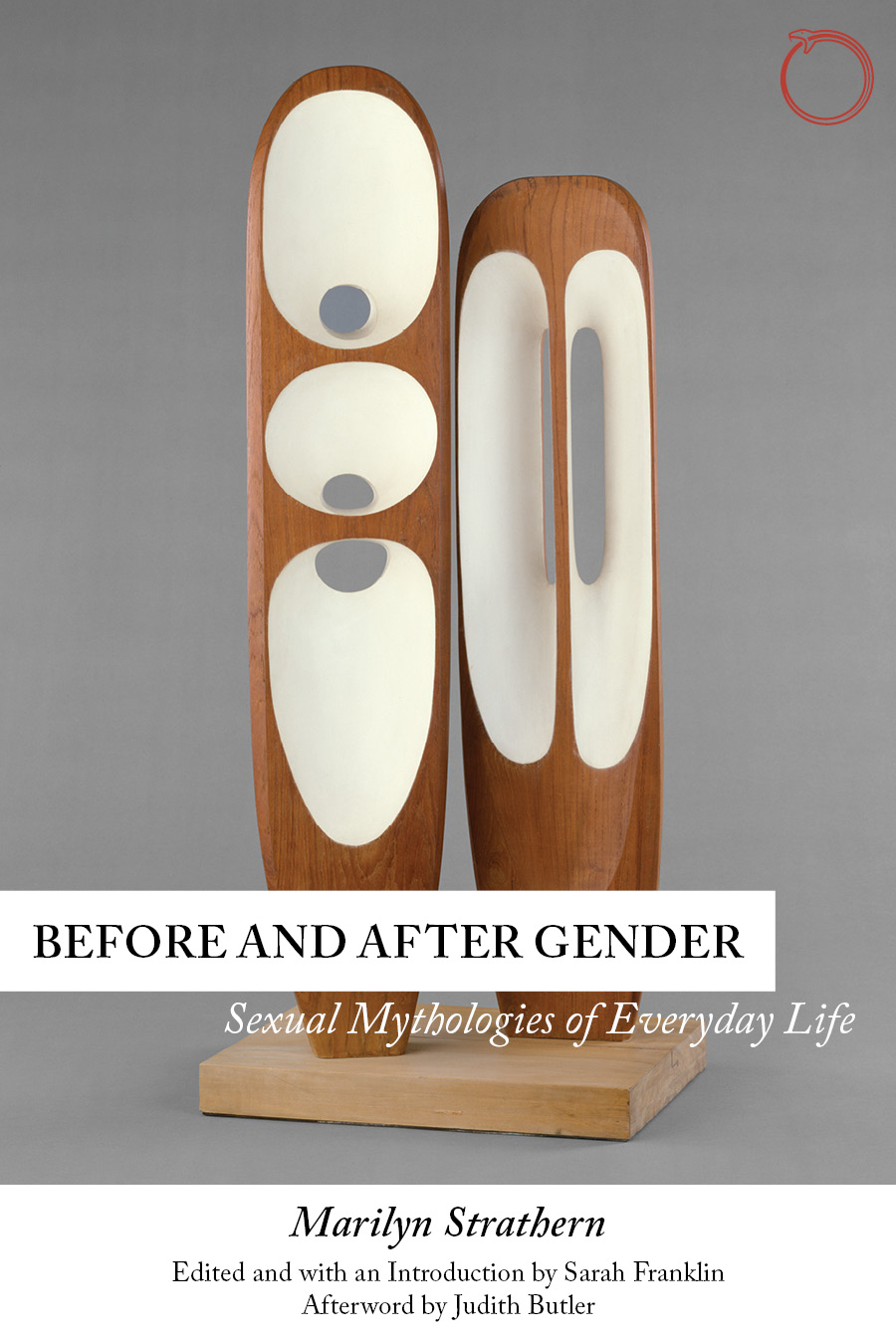Sexual Mythologies of Everyday Life
by Marilyn Strathern
Edited and with an Introduction by Sarah Franklin and an Afterword by Judith Butler
Written in the early 1970s amidst widespread debate over the causes of gender inequality, Marilyn Strathern’s Before and After Gender was intended as a widely accessible analysis of gender as a powerful cultural code and sex as a defining mythology. But when the series for which it was written unexpectedly folded, the manuscript went into storage, where it remained for more than four decades. This book finally brings it to light, giving the long-lost feminist work—accompanied here by an afterword from Judith Butler—an overdue spot in feminist history.
Strathern incisively engages some of the leading feminist thinkers of the time, including Shulamith Firestone, Simone de Beauvoir, Ann Oakley, and Kate Millett. Building with characteristic precision toward a bold conclusion in which she argues that we underestimate the materializing grammars of sex and gender at our own peril, she offers a powerful challenge to the intransigent mythologies of sex that still plague contemporary society. The result is a sweeping display of Strathern’s vivid critical thought and an important contribution to feminist studies that has gone unpublished for far too long.
In Before and After Gender, Strathern writes that she “brings writing to bear on other writing in order to shift the viewpoint.” From the beginning, she has not so much shifted viewpoints as entirely retooled their optics, making viewpoints undo other viewpoints, and here she does it for gender and all its bumptious ethnographic and conceptual kin. Relationality has always been her subject; she studies relations with relations in order to understand how doing relations works, or in a more utopian vein, might yet work to make us ask better questions. No wonder her extraordinary early manuscript on gender as model and tool for doing relations does late work needed now, when social life everywhere is in theoretical and practical trouble.
— Donna Haraway, author of Simians, Cyborgs and Women: The Reinvention of Nature
This book is more than one. It mobilizes anthropological tales to shake nineteen seventies Euro-American feminism out of provincial fantasies of universality. It presents contrasting cases of sexual binarism to demonstrate the relevance of concepts for anthropology, not just those in use in the societies it writes about but also those it uses in writing. And it tells about genders that are variously relational. How truly Strathernian to allow this intellectual ancestor to appear—outdated!—magically fresh!—so long after its prodigious offspring.
— Annemarie Mol, author of The Body Multiple: Ontology in Medical Practice
Marilyn Strathern’s “lost manuscript” juggles ethnography, novels, and social criticism as it conjures a moment when the intersection of feminism and anthropology exploded with excitement. In a world in which “theory” too often refers to almost theological dogma, here we watch a master immerse herself in the maelstrom of her material—spinning threads, casting reflections, posing comparisons—to show us how relations matter.
— Anna Tsing, author of The Mushroom at the End of the World
2016
362 pages
ISBN: 9780986132537
Price: $35.00
Table of Contents
by Sarah Franklin
by Judith Butler
Literary Reviews
Carsten, Janet. “Kinship and gender as legacy and future.” Journal of the Royal Anthropological Institute 23, no. 1 (2017): 189-192.
In rendering gender as relationality, Strathern underlines how gender inscribes, models, or inserts itself into other forms of relation. Partly through the way gender can stand for opposition and also complementarity, she shows how it is boundlessly generative of other relations but also encompassing. The attentiveness to naturalization together with relationality illuminates how difficult it is to escape our own cultural versions of gender relations and our ideas of what constitutes the person because they are so deeply embedded in many aspects of our own cultural history. Laying out descriptions of patriarchy or calling for an end to unequal gender relations, Strathern argues (argued), was unlikely to be adequate to the task of political change. So, this early, lost book was – is – at once a prescient commentary on contemporary 1970s feminist writing and a pioneering work in the anthropology of gender.
Valdur, Mari. “Book Review: Before and After Gender: Sexual Mythologies of Everyday Life by Marilyn Strathern.”LSE Review of Books, 2017.
Before and After Gender: Sexual Mythologies of Everyday Life urges the reader to create a context not only for Marilyn Strathern’s method of analysis using extensive ethnographic and literary materials, but also for the fact that the book was written between 1973-74 but only published in 2016. Strathern is one of the most influential anthropologists of our time, whose significance extends well beyond the discipline. Besides her work on gender, Melanesian and feminist anthropology, she has made an important contribution to research on auditing and accountability, intellectual and cultural property as well as bioethics. Differing from standard approaches, challenging and extremely rewarding, Before and After Gender has perhaps been most missed by anthropologists, sociologists and anyone interested in literary, gender and women’s studies.
Before and After Gender is a fascinating study of sexual mythologies that exist in different cultures… It is a pleasure to read such a well-grounded and scrupulous study.
